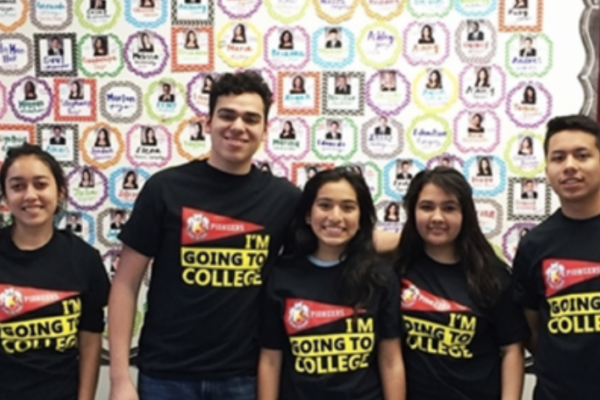There is lots of talk today about new, “disruptive” ways to improve the achievement of children of color and children from low-income families. But the basic outlines of how to do so have been known for decades. Expert practitioners, armed with good research, demonstrate how to do so every day in schools around the country. Their work isn’t flashy or even particularly innovative, which may be why they receive little notice.
Take, for example, Artesia High School in Los Angeles County.
When Sergio Garcia arrived as the school’s new principal in 2005, Artesia fit the stereotype of a low-performing, high-poverty school: low test scores; high suspension rates; low graduation rates; and a demoralized faculty.
On Garcia’s first tour of the school he saw five fights in about 20 minutes. “My first thought was, ‘what have I gotten myself into?’” he said.
Today just about every student at Artesia graduates and goes to either a two- or four-year college, with a few going to trade schools and the military. When I visited I saw students analyzing To Kill a Mockingbird, debating evidence of climate change, and calculating the force required to push a piano up a ramp.
Students volunteered that they felt safe and told me of their plans for the future. Test scores match the rest of the state in math and considerably outpace it in English. All this in a school where 80 percent of Artesia’s students are Hispanic, 10 percent African American, and 80 percent come from homes the state calls “economically disadvantaged.”
What did Garcia do?
He did things that we know work.
He changed the schedule of the school to ensure that all students were in college preparatory classes instead of the remedial backwaters most of them had been in and then provided them with tutoring both during and after the school day.
He enforced school rules about late entry into class, ensured that every student had at least one adult to talk with regularly so that students felt a strong relationship with the school, and built ways to recognize and celebrate students’ achievement and improvement so that they could envision themselves as successful.
He made the school into an oasis of activity after school and on the weekends by establishing clubs, teams, musical and theatrical activities, and provided a well-equipped student union where students could use computers and printers early from morning to evening.
Finally, he brought teachers together to collaborate on what kids needed to learn, how to tell if they learned it, and what to do when they didn’t. This provided an opportunity for teachers to learn from each other to improve instruction and to figure out together when they needed additional knowledge from research and experts.
[Read More: For Teachers, The Most Powerful Question ]
There’s nothing surprising or counterintuitive about any of that. But there is something radical: Garcia discarded the long tradition in public education of building schools around the isolating practice of individual teachers working alone in their classrooms.
“I always say the answers are in the school,” he told me. But finding answers requires school schedules that provide time for teachers to meet together and professional development to help teachers learn how to use that time productively. It also requires a school-wide culture that empowers adults and students alike to discuss problems that need addressing.
I have been in dozens of high-performing and rapidly improving high-poverty schools, and each has a leader who, like Garcia, understands how to structure the work of teachers to help them learn from each other to improve their instruction. Master schedules and professional collaboration aren’t the stuff of legend. No one may ever make a movie about Garcia’s transformation of a dangerous, scandal-ridden school to a calm, well-functioning one where just about every student graduates. But Artesia and others like it have important lessons to teach.
[Read More: How One Ohio School is Beating the Odds]
Karin Chenoweth is writer-in-residence at The Education Trust and author of Schools that Succeed: How Educators Marshal the Power of Systems for Improvement.

